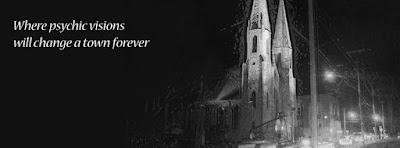Essentials in Munich
By Jorge R.Jefferds March 14, 2017
Before
planning a trip to Munich, Germany, there are basic tips to keep in
consideration. You might only need your US passport to enter the country of the
North Sea. Visa is not required if your trip does not last more than 90 days
and is only for business or vacation. Climate in this area is similar to the
one on the west coast of the United States, specifically to Washington and
Oregon States. Winters are cool, not freezing. Summers can be warm. Most days
are cloudy throughout the year. Since German is the official language, make
sure to bring your pocket bilingual dictionary or try to learn the essential
expressions needed in restaurants, hotels, public transportation, and tourist
attractions.
 |
| Aerial View of Cologne |
Upon the
arrival to the airport, look for any KVB or DB ticket machine and buy a
KölnCard. For as little as €9.00, you will discover Cologne in all its
diversity at reduced prices, which means discounts in restaurants, cultural
attractions, and free public transportation rides. With ticket in hand, take
the Kölner Verkerhsbetriebe KVB in order to get to downtown. Book accommodations
always prior to your departure, for you can receive the necessary information
about your hotel.
Cologne is
the fourth largest city in Germany with one million inhabitants. As well,
almost three million hotel guests and private visitors stay here each year.
Therefore, booking is important if you do not want the adventure of losing a
day trying to find your room. If you arrive during the early hours, don’t rest
even if you have a jet lag. Go to your first stop; visit the most famous
postcard icon of the city: the Cologne Cathedral.
 |
| Shrine of the Three Kings |
Regardless
your religious beliefs, you will be amazed by the beauty of this gothic
landmark, whose construction dates back to the 12th century. The
bones of the three wise men (shrine of the Three Kings) lie inside of it. The
ground breaking ceremony was in 1248, the inauguration as the third largest
church construction in the world was in 1880. Cologne became an important
centre of medieval pilgrimage, when Cologne’s Archbishop Rainald of Dassel gave
the relics of the Three Wise Men to Cologne’s cathedral in 1164 (after they in
fact had been captured from Milan). Furthermore, Cologne preserves the relics
of Saint Ursula and Albertus Magnus.
Actually, it
was finished in 1880 not just as a place of worship but also as a German
national monument celebrating the newly founded German empire and the
continuity of the German nation since the middle ages.
If you have
time in your first day, visit these medieval houses:
The Cologne
City Hall (Kölner Rathaus), founded in the 12th century, is the oldest
city hall in Germany still in use. Located off Hohe Strasse, it accommodates part
of the city government with a documented history spanning about 900 years.
The history
of its council during the 11th century is a prominent example for self-gained
municipal autonomy of medieval cities. Today's building complex consists of
several structures, added successively in varying architectural styles: they
include the 14th century historic town hall, the 15th century Gothic style
tower, the 16th century Renaissance style loggia and cloister (the Löwenhof),
and the 20th century Modern Movement atrium (the Piazzetta). The so-called
Spanischer Bau is an extension on Rathausplatz but not directly connected with
the main building.
 |
| The Cologne City Hall |
The Gürzenich is a magnificent
representation building in the heart of Cologne, which was opened in 1447. It
offers a classic late Gothic façade on the outside. The interior was designed
in the style of the 50s. In 1997 a general renovation of the building took
place, with the aim of combining historical architecture with the most modern
event technology into an exquisite event center. The Gürzenich Cologne is a
worthy setting for stylish celebrations, congresses, balls, concerts and other
social events. Cologneers love "their" Gürzenich. Organizers and
their guests experience why.
Haus Saaleck is another amazing landmark,
and very representative, patrician house built in late Gothic style in 1461. Over
the centuries it has preserved its original face. The Second World War,
however, led to considerable destruction, with the interior completely burning
out. In the post-war period the building has been rebuilt using old building
fabric in its external appearance. The interior was expanded in the style of
the 1950s. In the meantime the house was initially used for exhibitions of the
Cologne City Museum.
 |
| Haus Saaleck |
The ground floor of the building has been available to the artothek since 1973
to the present day as an exhibition space; in the upper floors were up until
2005 several municipal facilities. Since 2007, the new owner, Christoph
Böther-Schultze, has been working for Haus Saaleck and has extensively
renovated it in the last three years.
The history and the restoration work are presented by the builders and caretakers. Also highly interesting are the new possibilities of use resulting from the preservation of monuments as a living Cologne citizen's house.
The history and the restoration work are presented by the builders and caretakers. Also highly interesting are the new possibilities of use resulting from the preservation of monuments as a living Cologne citizen's house.

Excellent post regarding "CITY DESTINATION: Essentials in Munich"
ReplyDeleteMCX Tips
Commodity Trading Tips